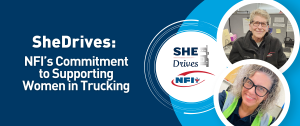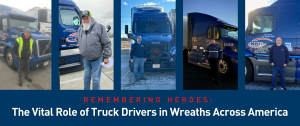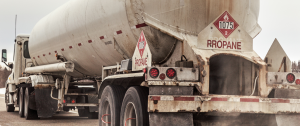
March marks Women’s History Month, a time to celebrate the achievements of women across industries and recognize their contributions to historically male-dominated fields.
The trucking industry, long considered one of these male-centric spaces, has been undergoing significant changes in recent years, with more women joining the workforce as drivers, mechanics, and logistics professionals.
NFI Industries, a leader in supply chain solutions, is at the forefront of this movement through its SheDrives program, a groundbreaking initiative designed to empower and support female professionals in trucking.
What Is SheDrives?
SheDrives, launched in August of 2018, is NFI’s dedicated program aimed at fostering career advancement and empowerment for women in the trucking industry.
This initiative offers female employees, whether they are behind the wheel or in an office role, mentorship opportunities, professional development resources, and a strong community of support.
By providing women with the tools and encouragement they need to succeed, SheDrives seeks to break barriers and create more opportunities for female professionals in all facets of the transportation and logistics sectors.
One of the most impactful aspects of SheDrives is its commitment to helping women transition within the industry. Many women start their careers as drivers but later move into office-based roles at NFI, bringing their valuable firsthand experience to leadership, operations, and administrative positions.
These transitions not only enhance their own career trajectories but also strengthen the company by ensuring that decision-makers understand the realities of life on the road.
From the Driver’s Seat to the Office: Women Advancing at NFI
NFI’s dedication to career growth is evident in the many success stories of women who have made the shift from driving to office roles.
For NFI Transportation Supervisor Callie K., who spent over two decades behind the wheel as a truck driver before transitioning to her current role at NFI, having the perspective of a former CDL driver has been essential for her success and growth.
“I have a really good camaraderie with the drivers because I was one,” said Callie. “So I can tell them I did it. I’ve been there, I’ve done that.”
These former drivers now hold key positions in dispatch, operations, safety compliance, and customer service, among other areas. Their backgrounds as drivers provide them with a unique perspective, allowing them to advocate for practical policies and improvements that enhance the daily experiences of NFI’s fleet.
Many of these women credit SheDrives for providing them with networking opportunities, mentorship, and resources that made their career transitions smoother. With support from peers and leadership, they have been able to apply their industry knowledge in new ways, whether through fleet management, logistics coordination, or driver training programs.
Why Programs Like SheDrives Matter
The trucking industry has long struggled with gender disparity. In fact, according to the Women in Trucking Association, women make up only about 14% of professional drivers in the U.S., and the numbers are even lower in leadership positions.
Programs like SheDrives help bridge this gap by actively encouraging female representation and ensuring that women have access to career growth opportunities.
Terri S., who currently serves as the Onboarding Supervisor at NFI in Minooka, Illinois but began her career in 1978 as a CDL driver, has seen a tremendous amount of growth of support women receive in the trucking industry.
“The opportunities are wonderful now for women,” said Terri. “The doors have really opened up. Unlike when I started, when there were probably a handful of women around the country driving.”
Beyond professional advancement, initiatives like SheDrives also contribute to fostering a more inclusive and supportive work environment. Having more women in leadership roles creates a ripple effect, paving the way for future generations of female truck drivers and industry professionals.
Terri also emphasized that she especially aims to help new drivers find their footing, as she understands the challenges and the importance of support systems.
“I love helping everybody because I know it’s horrible to be new,” Terri explained. “I assure them that when they are out on their own I’m not going to just throw them the keys and tell them to go, like it was done to me. They know they can always call me for anything.”
This Women’s History Month, it’s important to recognize and celebrate the strides being made toward gender equality in industries like trucking. With programs like SheDrives leading the charge, the road ahead looks promising for women in transportation, both on and off the road.
Are you or your employer celebrating Women’s History Month in any unique ways this March? Let us know by reaching out on social media!











